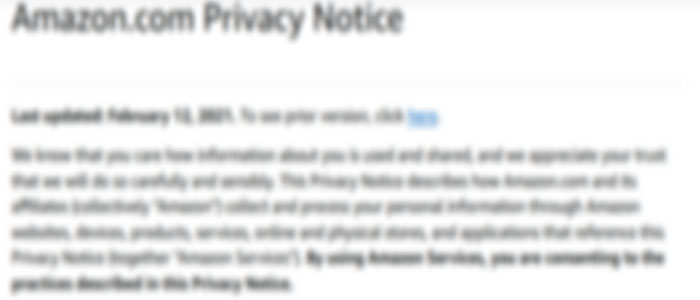On the one hand, it’s easy to see why having a device like the Amazon Ring Doorbell installed on your house is incredibly convenient.
For those unfamiliar, the Ring operates a lot like a traditional doorbell, albeit with a twist. It has a camera installed on the front of it, allowing you to always see a live video feed of what’s going on in your yard at a moment’s notice. You can see who is at the door, get push notifications to your phone whenever someone arrives, and even talk with these people by way of a helpful intercom feature. However, since Amazon originally purchased Ring in 2018, it’s come under fire for privacy concerns – particularly as it relates to its relationship with local police departments. Since that time, police could essentially request footage from Ring doorbells whenever they wanted, so long as it was going to be used for the purposes of an active investigation. Naturally, people weren’t necessarily thrilled with the idea that local law enforcement could hijack their doorbell cameras without warning. Luckily, Amazon announced a policy change this week that should give people more control over who can see their Ring doorbell footage, when and for what purpose.
Amazon’s New Ring Doorbell Policy Change: An Overview
Prior to June 2020, police could essentially send email requests to specific Ring users in an “area of interest” that could be up to a half mile in size to obtain their footage – again, ostensibly during an active investigation. Now, police officers will need to publicly post their requests in the “Neighbors” app – essentially an accompanying social networking app that extends the functionality of the Ring doorbell itself.
In the event that local law enforcement wants to view their footage, people will see a “Request for Assistance” notification on their feed. They can also opt out of seeing these requests altogether should they so choose. Users can also see any “Request for Assistance” that wasn’t specifically addressed to them, allowing them to provide their own recordings should they want to. What’s interesting is that not all Ring Doorbell users are also actively engaged with the “Neighbors” app – meaning that this new policy will likely dramatically reduce the number of people who are seeing these police requests at all. It stands to reason whether or not Amazon will be emphasizing the app to a larger audience in an attempt to get people to use it who may not actually be aware it exists at all.
It may be surprising to learn that Amazon actually received more than 1,800 legal demands for Ring Doorbell footage in “areas of interest” across the United States in 2020 alone. That number is actually twice as high as it was just a year prior, in 2019. Amazon has also refused to say how many people had their footage sent to the police when served with these demands.
So while this policy change is definitely a step in the right direction, experts have also been warning that it doesn’t necessarily make it impossible for the police to get your footage if they want it. There’s a legal back door that they can and often do take advantage of – those aforementioned legal demands as outlined above. Police officers could send Ring a subpoena for basic information about its users, for example. They could also issue a search warrant for the footage, or get a court order to obtain it that way. Yes, they have to show that there is some evidence that a crime has taken place – but when the “area of interest” radius is still a half a mile in any direction, that crime doesn’t necessarily have to involve you.
In the end, none of this really changes big technology’s rocky relationship with privacy advocates everywhere. Companies like Facebook, Amazon and Apple often receive requests for user information as part of ongoing investigations around the world. On one end of the spectrum is Apple – who famously got into some hot water after refusing to help police break into an encrypted iPhone used by the San Bernardino shooter. They took their fight all the way to the FBI – and the FBI ended up backing down.
On the other end of the spectrum is Amazon – a company that won’t even say how many of its users have had their footage turned over to police in the first place. Given the fact that there are millions of Ring Doorbells and similar devices out in the wild, it’s easy to see how this number could be far greater than people realize. Still, it’s one topic that privacy advocates everywhere will be paying close attention to moving forward.


















Add comment